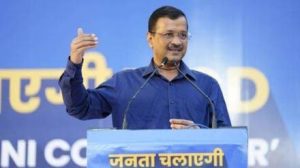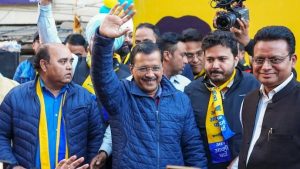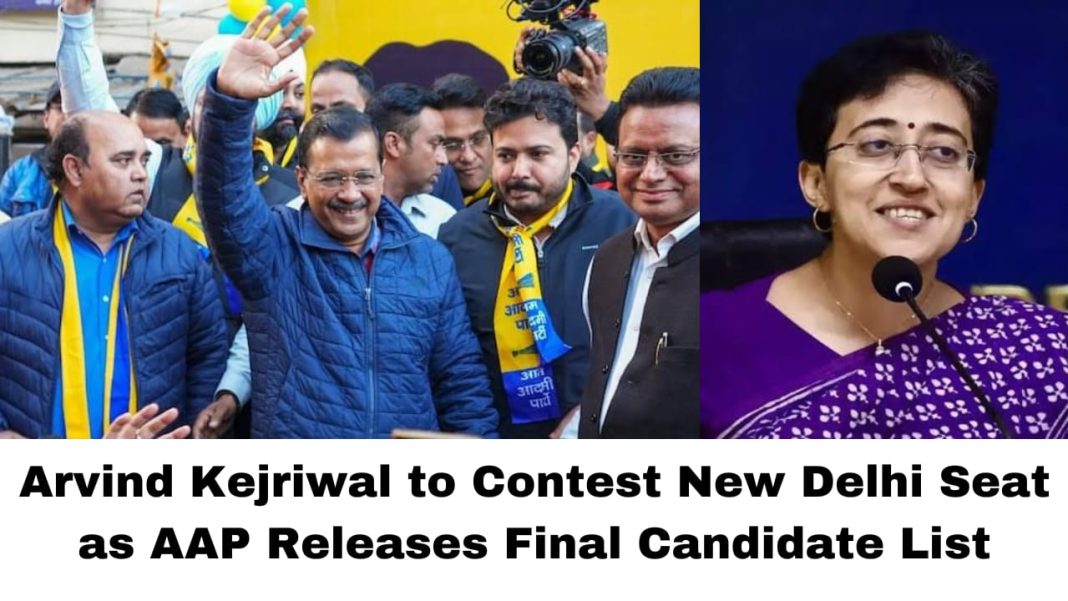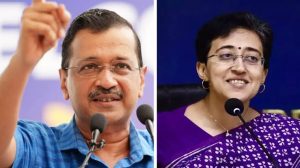Digital News Guru Delhi Desk:
The Aam Aadmi Party (AAP) has announced its fourth and final list of candidates for the Delhi Assembly elections, with 38 names, intensifying the political buzz ahead of the 2025 polls. This comprehensive list retains a balance of incumbency and fresh faces to bolster its strategy to secure a third consecutive term. Here’s a detailed breakdown of the latest developments, key strategies, and challenges AAP faces.
AAP’s Strategy: Familiar Faces and New Entrants
The AAP’s fourth list features a mix of seasoned politicians and new entrants, reflecting its dual focus on stability and outreach. Notably, Arvind Kejriwal will contest from the New Delhi constituency, a seat he has successfully defended in previous elections. Current Chief Minister Atishi, an influential leader in AAP’s policy-making, will represent Kalkaji, underscoring the party’s faith in its experienced candidates.

This list complements earlier announcements, totaling 70 candidates, with most sitting MLAs retained. However, AAP has also introduced new candidates in some constituencies, signaling a willingness to adapt and respond to local dynamics. By balancing continuity with fresh energy, the party hopes to maintain its dominance in a city it has transformed through its governance model.
Challenges from Opposition Parties
The Bharatiya Janata Party (BJP) and Congress pose significant challenges to AAP’s dominance. The BJP, despite its limited success in Delhi’s state politics, retains a strong organizational base and has leveraged national issues to counter AAP. Congress, seeking a revival, may cut into AAP’s urban voter base.
Kejriwal’s leadership will be under scrutiny as he counters opposition criticism, particularly regarding local governance issues like pollution, civic infrastructure, and public safety. Moreover, allegations of financial mismanagement in flagship programs may fuel attacks from rival parties.
Key Constituencies and High-Stakes Battles
- New Delhi Constituency: Arvind Kejriwal’s decision to contest from his traditional seat reflects confidence in his rapport with urban voters. The constituency has witnessed significant development under his tenure, including infrastructure projects and enhanced public services. However, opposition candidates may highlight shortcomings to sway voters.
- Kalkaji: Atishi’s candidacy underscores her growing prominence in Delhi’s politics. As a driving force behind AAP’s education and health initiatives, she is expected to command a strong voter base.
- Battleground Constituencies: Newly introduced candidates face stiff competition in areas where the BJP has traditionally performed well. AAP’s emphasis on showcasing its achievements—such as free electricity, education reforms, and mohalla clinics—will be critical in retaining these seats.
The Governance Report Card
AAP has built its electoral campaigns around its governance successes, particularly in education, healthcare, and public services. Initiatives like modernizing government schools, providing free healthcare through mohalla clinics, and subsidies for water and electricity have garnered widespread public support. However, these programs also invite questions about fiscal sustainability.
As part of its electoral pitch, AAP is likely to emphasize how these initiatives have directly benefited the urban poor and middle class. The challenge will be to maintain this narrative against claims of administrative inefficiency and resource mismanagement.
The Role of Kejriwal’s Leadership
Arvind Kejriwal remains AAP’s most influential figure, symbolizing its identity and ethos. His leadership style—marked by accessibility and issue-centric governance—resonates with Delhi’s electorate. However, his national ambitions, including recent stints in Punjab and Gujarat elections, may prompt rivals to label him as disconnected from Delhi’s core issues.
Kejriwal’s ability to counter such criticisms and maintain his image as a leader dedicated to Delhi will be pivotal in steering AAP to victory. His direct communication with voters through public addresses and social media campaigns reinforces his grassroots appeal.
Public Sentiment and Voter Dynamics
Delhi’s electorate is known for its pragmatic voting patterns, often separating state and national issues. This trend favors AAP, as the party has successfully framed the elections around local governance rather than ideological battles. Women and youth voters, key demographics for AAP, are expected to play a decisive role, with schemes like free bus rides for women and educational reforms appealing strongly to these groups.

The party’s efforts to engage with migrant communities and low-income households through targeted welfare programs could further consolidate its voter base.
Outlook for the 2025 Elections
As the campaign gains momentum, AAP appears well-positioned to retain its hold on Delhi, but not without significant challenges. Opposition parties are expected to intensify their attacks, particularly on contentious issues like air pollution and water quality. Moreover, managing internal dissent and ensuring cohesive campaigning across constituencies will be critical for AAP’s success.
For Kejriwal, this election is not just about retaining power but also about reinforcing his political brand ahead of future national ambitions. A strong performance will solidify AAP’s governance model as a template for urban governance in India, while a weaker showing could embolden rivals.
Conclusion
The release of AAP’s fourth candidate list has set the stage for a highly competitive election in Delhi. With Kejriwal at the helm and a strategy combining proven leaders and fresh faces, AAP aims to translate its governance record into electoral success. However, the BJP and Congress remain determined to disrupt its dominance, ensuring a spirited battle in the months ahead. As the campaign unfolds, the dynamics between governance, public sentiment, and leadership will shape the future of Delhi’s politics.
You May Also Read: Indian Navy Successfully Tests Nuclear-Capable Missile From Submarine INS Arighaat









